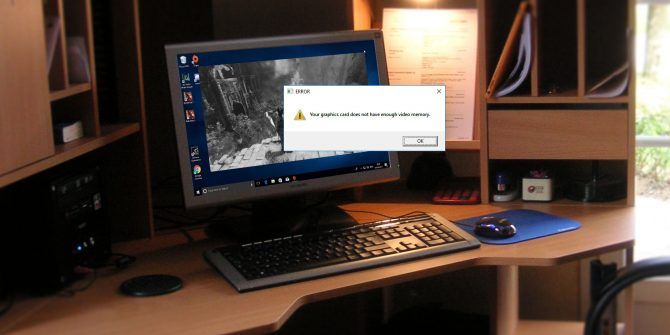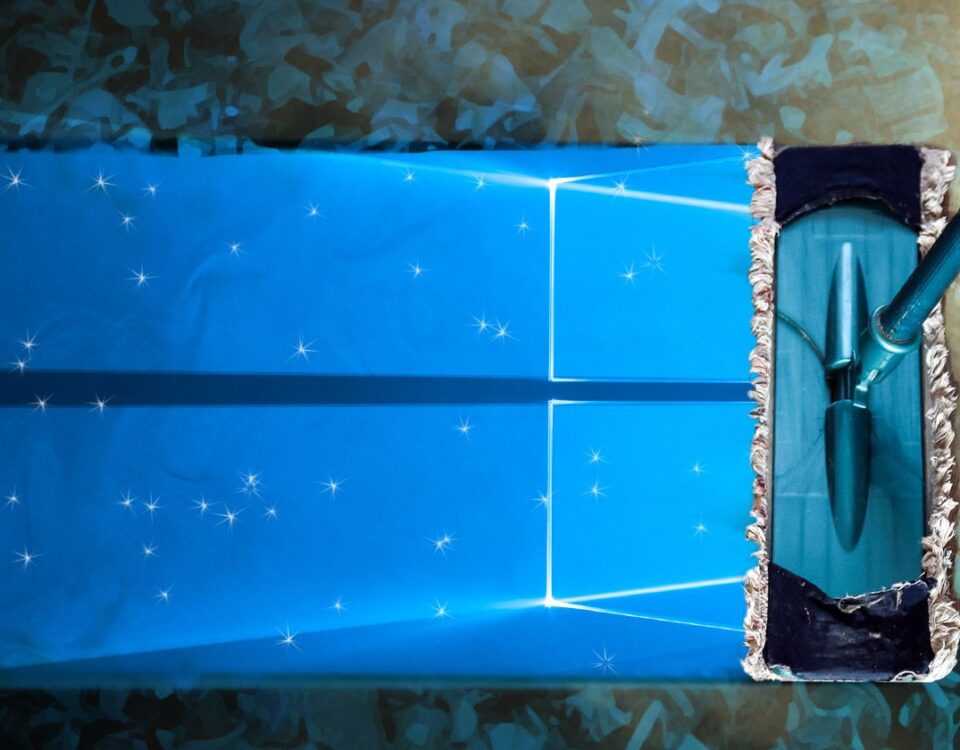Windows error 0x80070057 is a well-known irritant among users and sysadmins alike. This system error has been plaguing us since at least Windows XP. As such, it isn’t an entirely difficult error to fix, and we can show you exactly how to take care of it.
What Does the Windows Error Code 0x80070057 Mean?
The 0x80070057 error code means that Windows ran into a storage issue. Possibly, your hard drive or SSD didn’t have enough space left to download or copy files. But this error could also signal a file system incompatibility, a corrupt hard drive, or any other storage-related issue.
Unknown Error; Unspecified Parameters; Service Not Running
The message arriving with error 0x80070057 can vary, depending on where the error in the update service is found, but it is usually a variant of “Unknown error,” “Unspecified parameters encountered,” or simply that the “Required services are not running.”
The update service or the activity you were engaged with then ends, plonking you firmly back to square one.
One Windows Update in particular, namely the 2016 Windows 10 Anniversary Update, or Windows 10 Build 1607, saw numerous reports of the error. As this error usually relates to the Windows Update process, many users were unhappy with it. The update either left an uncompleted update process and temporarily “breaking” the system, or were simply forced back to Windows 10 Build 1507 (aka Threshold 1). Unfortunately, the error hasn’t disappeared since.
Error 0x80070057 usually occurs when:
- You are trying to back up your files, and there is corruption.
- You are trying to install a Windows operating system and the System Reserved Partition is corrupted.
- Corrupt registry or policy entries are interfering with the Windows Update process.
- There were some problems installing updates, and the system will attempt to try again later.
All jolly irritating, all jolly fixable.
11 Common Ways to Fix Error Code 0x80070057
The frustrating thing about error code 0x80070057 is that you rarely know what exactly caused it. If it happened during a Windows Update, chances are you ran out of storage space. But it’s really just an educated guess.
We’ll take you through all potential fixes, starting with the most common and easy ones. If you received a specific error message, see if we covered it below.
1. Clear Drive Space
Error 0x80070057 often shows up along with Windows Update since update files can be humongous. Moreover, when Windows performs a whole system update, it stores the old version in a folder called Windows.old, which can take up many gigabytes of storage space; more than you might have available.
hat’s typically when Windows Update fails. But it’s not the only time this error can show up.
To see how much space is left on your system drive, press Win + E to launch the File Explorer and head to This PC. If it looks like it could be tight, right-click the drive, select Properties > Disk Cleanup > Clean up system files. Check everything that can go, especially the Recycle Bin and Windows Update Cleanup, then click OK and confirm with Delete Files. If you’d prefer to keep Windows Update files for recovery, you can skip the System Files step and start from Disk Cleanup.
Still running into the error? Try clearing more Windows storage space or proceed with the following solutions.
2. Sync the Windows Date and Time
When your Windows clock is out of sync, it can cause all kinds of issues, including error code 0x80070057. While this one isn’t a common cause, it tends to be easy to fix.
First, check the time and date by clicking the time in the far right of the Windows Taskbar. If it looks right, we can skip this step, but if it doesn’t align with the actual time and date, here’s how to fix it:
Windows 11: Press Win + I to launch the Settings app, then go to Time & language > Date & time
Windows 10: Right-click the Taskbar and select Adjust date/time.
We recommend enabling the following options:
- Set time automatically
- Adjust for daylight saving time automatically
- Set time zone automatically
With those set, click Sync now, just to be sure. If you find that your Windows time keeps getting thrown out of sync, there might be a deeper issue.
3. Check Windows Update
If error code 0x80070057 showed up independent of Windows Update, a missing update could be the cause. To check whether you have pending update, press Win + I and follow these steps:
Windows 11: From the Settings app, select the Windows Update option, then click Check for updates.
Windows 10: Go to Update & Security, and click Check for updates.
Install any pending updates, then try again.
4. Run Chkdsk
Chkdsk is the easiest way to quickly find and fix corrupted files. This Windows tool scans your entire hard drive and can also identify defective hardware.
To run Chkdsk, press Win + E to launch the File Explorer, then head to This PC, right-click the system drive, and select Properties.
From here, switch to the Tools tab, click Check, then click Scan drive. The scan will happen in the background. In case any issues are found, you can choose what to do with them. We recommend fixing them and restarting your system.
5. Use the System File Checker
Windows has an inbuilt System File Checker tool we can use to scan the system for any potentially corrupted files. This tool will detail and potentially fix any unexpected corruptions, returning the system to a good working state.
Open an elevated Command Prompt by right-clicking the Start Menu and selecting Command Prompt (Admin) or Windows PowerShell (Admin). Now run the following command:
sfc /scannowThis command can take a little time to complete. Do not close the Command Prompt window until the verification is 100% complete. On completion, you’ll receive one of the following messages:
- Windows Resource Protection did not find any integrity violations. Your system did not contain any corrupted files; you need to try another fix for this issue
- Windows Resource Protection could not perform the requested operation. You need to reboot your system into Safe Mode, then run the command
- Windows Resource Protection found corrupt files and successfully repaired them. Details are included in the CBS.Log %WinDir%LogsCBSCBS.log. To view the details of what the System File Checker fixed, see the instructions below
- Windows Resource Protection found corrupt files but was unable to fix some of them. Details are included in the CBS.Log %WinDir%LogsCBSCBS.log. You’ll need to manually repair the corrupted files. Follow the below instructions to find the corrupted file, then manually replace with a known good copy of the file.
If you receive either of the final pair of messages, you’ll probably want to have a look at the System File Check log. This is especially important if you received the final message.
First, you’ll need to open an elevated Command Prompt by right-clicking the Start menu and selecting Command Prompt (Admin), Windows PowerShell (Admin), or Windows Terminal (Admin). Now run the following command:
findstr /c:"[SR]" %windir%LogsCBSCBS.log >"%userprofile%Desktop
fcdetails.txt"This will copy the details of the log to a plain notepad file that you’ll find on your desktop. As my Windows installation is pretty much brand new, I’m yet to encounter any issues. As such, my log looks like so:
However, if you had corrupted files that the SFC process was unable to automatically replace, you’ll spot some entries like this (taken from the Microsoft Support document on the System File Checker):
2007-01-12 12:10:42, Info CSI 00000008 [SR] Cannotrepair member file [l:34{17}]"Accessibility.dll" of Accessibility, Version =6.0.6000.16386, pA = PROCESSOR_ARCHITECTURE_MSIL (8), Culture neutral,VersionScope neutral, PublicKeyToken = {l:8 b:b03f5f7f11d50a3a}, Typeneutral, TypeName neutral, PublicKey neutral in the store, file is missingWe can now replace the corrupted file with a known good copy, again using the Command Prompt. First, you’ll need to open an elevated Command Prompt by right-clicking the Start menu and selecting Command Prompt (Admin), Windows PowerShell (Admin), or Windows Terminal (Admin).
We’ll now need to take administrative ownership of the corrupted file. Please note that in each listed instance you should replace pathandfilename with the information provided in the sfcdetails.txt created in the previous section.
Use the following command:
takeown /f em>pathandfilenameem>Now use the following command to grant administrators full access to the corrupted file system:
icacls em>pathandfilenameem>/grant administrators:FFinally, replace the corrupted system file with a known good copy by using the following command
copy em>sourcefile destinationfileem>For instance, if you’ve copied a known good system file from a system running the same operating system (and same version, same build etc.) onto a USB, the command might look like this:
copy f:usbstickjscript.dll c:windows
ystem32jscript.dll6. Run the DISM Command
If the manual replacement described above is proving too difficult, or if there are too many files to replace, we can use the DISM command.
DISM stands for Deployment Image & Serving Management, and we can use this command in an attempt to download and restore the systems file health. From an elevated Command Prompt or Windows PowerShell prompt, enter the following command:
DISM /Online /Cleanup-Image /RestoreHealthDepending on your system health and the level of corruption present, this command could take a while to complete. This process has been known to appear to hang at 20%.
If that happens, just wait for a while, it should continue of its own accord. Once it is finished, check if any files have been replaced. If they have, you’ll need to restart your computer, then run the sfc /scannow command again. It should replace the corrupted file this time around.
7. Fix Group Policy Interference
This hasn’t been the case for everyone, but when Windows 10 was released many users (understandably) took affront to the archaic Windows Update system metered out by Microsoft.
Windows 10 Home users were largely bound to this system, but Windows 10 Pro users had the option to alter their Group Policy settings as to render the update system impotent.
However, interfering with this policy may be exactly what is causing the issue with the Windows Update process.
Press Win + R to open the Run dialogue. Type gpedit.msc and press Enter. Now follow this path Computer Configuration > Administrative Templates > Windows Components > Windows Update > Configure Automatic Updates > Not Configured.
Restart your system, and hopefully the update will now complete.
8. Reset Windows Update Repository
On occasion, we can reset the Windows Update repository in an attempt to relieve the issue. This is a somewhat lengthy process that I am not going to detail in this article.
However, I will point you to the Microsoft Support document that details the entire process, so you can attempt this fix with their information.
9. Windows Update Troubleshooter
I’m not sure how well the Windows Update Troubleshooter works for this error, as it can be directly affected by group policies and other system settings.
But if you’re still unable to complete an update, it could be worth downloading and giving it a shot.
Head to this page and download the Windows Update Troubleshooter. Once downloaded, run the troubleshooter.
Select Windows Update, and then select Advanced, then Run as administrator. This will run the troubleshooter as an Administrator and will be able to find and resolve a wider range of issues. Press Next.
The troubleshooter will automatically scan your system for issues affecting Windows Update. If any issues are found, the troubleshooter will automatically attempt to fix them, unless you unticked the automatic fix box.
10. Do a Windows System Restore, Reset, or Format Your Drive
This is pretty much your last resort since you’ll lose changes since the last system restore point was made or you’ll have to set up your system from scratch after a reset or formatting your drive. But it’ll fix any Windows- or software-based issues. This article on how to restore Windows to factory settings takes you through all your options, from least to most invasive. Remember to make backups before you nuke your system.
11. Invest in a New Drive
If all else fails, the issue might be hardware-based. The very last thing you can try here is to replace your system drive with a new SSD.
Specific Error Code 0x80070057 Messages and How to Fix Them
When your error code 0x80070057 came with a specific description, one of the specific solutions below might bring relief.
1. We’ll Try Again Later
Following the Anniversary Update, some Windows 10 users are encountering the following Windows Update error message:
There were some problems installing updates, but we’ll try again later. If you keep seeing this and want to search the web or contact support for information, this may help – (0x80070057).
There are a number of ways we can attempt to alleviate this issue.
Rename the SoftwareDistribution Folder
Press Win + R to open the Run dialogue, then type %SystemRoot% and press Enter. Scroll down to find the SoftwareDistribution folder. Rename this SoftwareDistributon.old. Now restart your computer, and attempt the update.
Change the Windows Registry
If this doesn’t work, we can make changes to the Windows Registry. Press Win + R to open the Run dialogue, then type regedit and press Enter.
Ensure the following registry entries match your own:
[HKEY_LOCAL_MACHINESOFTWAREMicrosoftWindowsUpdateUX] "IsConvergedUpdateStackEnabled"=dword:00000000[HKEY_LOCAL_MACHINESOFTWAREMicrosoftWindowsUpdateUXSettings] "UxOption"=dword:00000000Make the changes if necessary, then reboot your system and attempt the upgrade.
2. The Parameter Is Incorrect
In this instance, the backup process begins, using Windows inbuilt service. The process fails, generating the message:
An internal error has occurred: The parameter is incorrect: (0x80070057)
Press Win + R to open the Run dialogue. Type regedit and press Enter. Now, find the following registry key:
HKEY_LOCAL_MACHINESOFTWAREPoliciesMicrosoftSystemCertificatesRight-click SystemCertificates, and create New > DWORD (32-bit) Value. Enter the name as CopyFileBufferedSynchronousIo, and set the Value to 1. Hit OK, then restart your system. Your backup should now complete!
Alter Decimal Symbol
Head to Control Panel > Clock, Language, and Region. Under Region, select Change date, time, or number formats. This will open a new panel. Select Additional Settings. Ensure there is a period (full-stop) next to the Decimal symbol option, then press Apply, and OK.
Any Other Options?
Microsoft’s free SetupDiag tool can also help you analyze and fix Windows update errors. Some users have reported the Yamicsoft Windows 8 Manager to fix the Windows Update issues.
I’ve not personally tried this fix, so I’d advise proceeding with relative caution, just in case the tool has some unexpected side effects. You are warned.
You Can Now Tackle the Windows Update Error 0x80070057
And your system should now be well and truly updated. As well as this, you now know how to take care of any other Windows Update issues that may appear in the future. So long as Microsoft continues with this system of enforced updates, the system will come under serious scrutiny when regular users are negatively affected.














